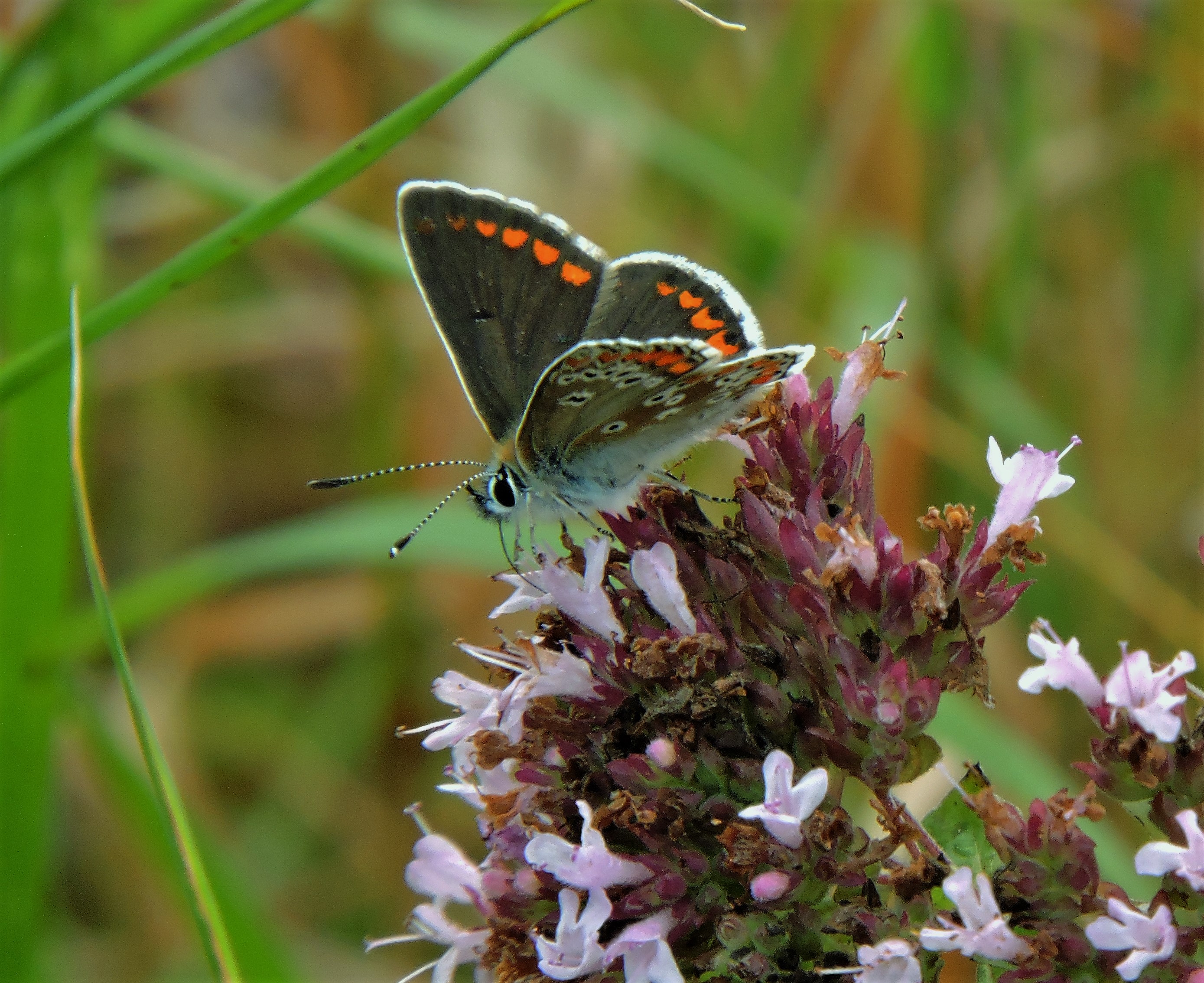
Welcome to our website showcasing the creation and ongoing development of our garden, creating a piece of countryside on our very own doorstep for butterflies to breed and thrive in.
Introduction
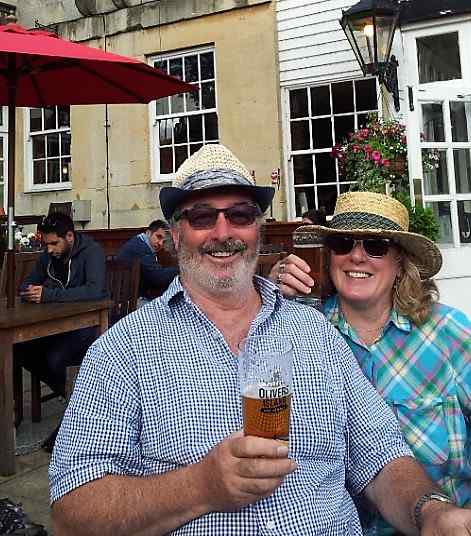
We are Phil and Ros Bowler, and since 1997 we have created a one acre wildlife garden from scratch, devoted to the conservation of local butterflies in rural Lincolnshire. For twelve years from 1985 to 1997 we had a highly successful award-winning butterfly/wildlife garden in Derbyshire. We moved to the Lincolnshire Fens in 1997 - the habitat could not be more different: flat, with mile after mile of arable farmland, and very lacking at the time in trees and hedgerows. It was initially very uninspiring, but we had researched the area a few years prior to moving over and were aware that the waterway network of dykes were quite rich in butterflies, courtesy of their wild flower banks that were largely left alone. The local branch of the Butterfly Conservation society was very surprised when we submitted our records - they had more or less written this area off as inhospitable to most wildlife, especially butterflies. So, when we moved over, we set ourselves an even bigger challenge than before, working from a blank canvas.
Our aim was to provide the butterflies with the larval foodplants and nectar sources that they require to breed on site and expand their populations. It has very much been a success story and in recent years has been officially recognised as an important mini habitat, so much so that the Brown Argus, Essex Skipper, and the day flying Six-spot Burnet Moth have had higher counts here than anywhere else in Lincolnshire in certain years.
The idea was that we would create an oasis of highly suitable habitat for them to colonise, so that no matter what happens in the surrounding countryside, there would always be this nucleus of suitable habitat in our garden for them: A HOME FOR BUTTERFLIES in fact.
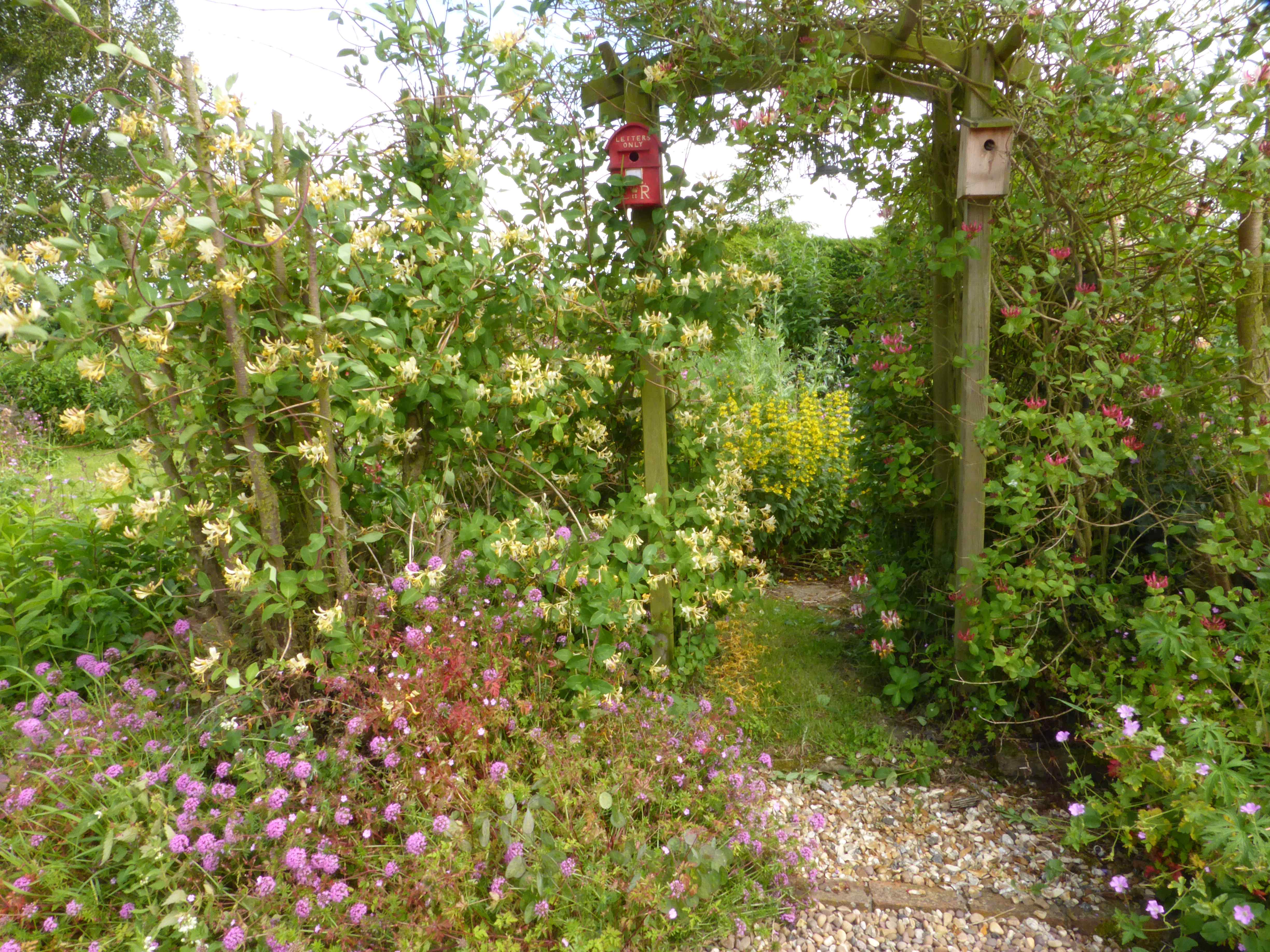 A home for butterflies
A home for butterflies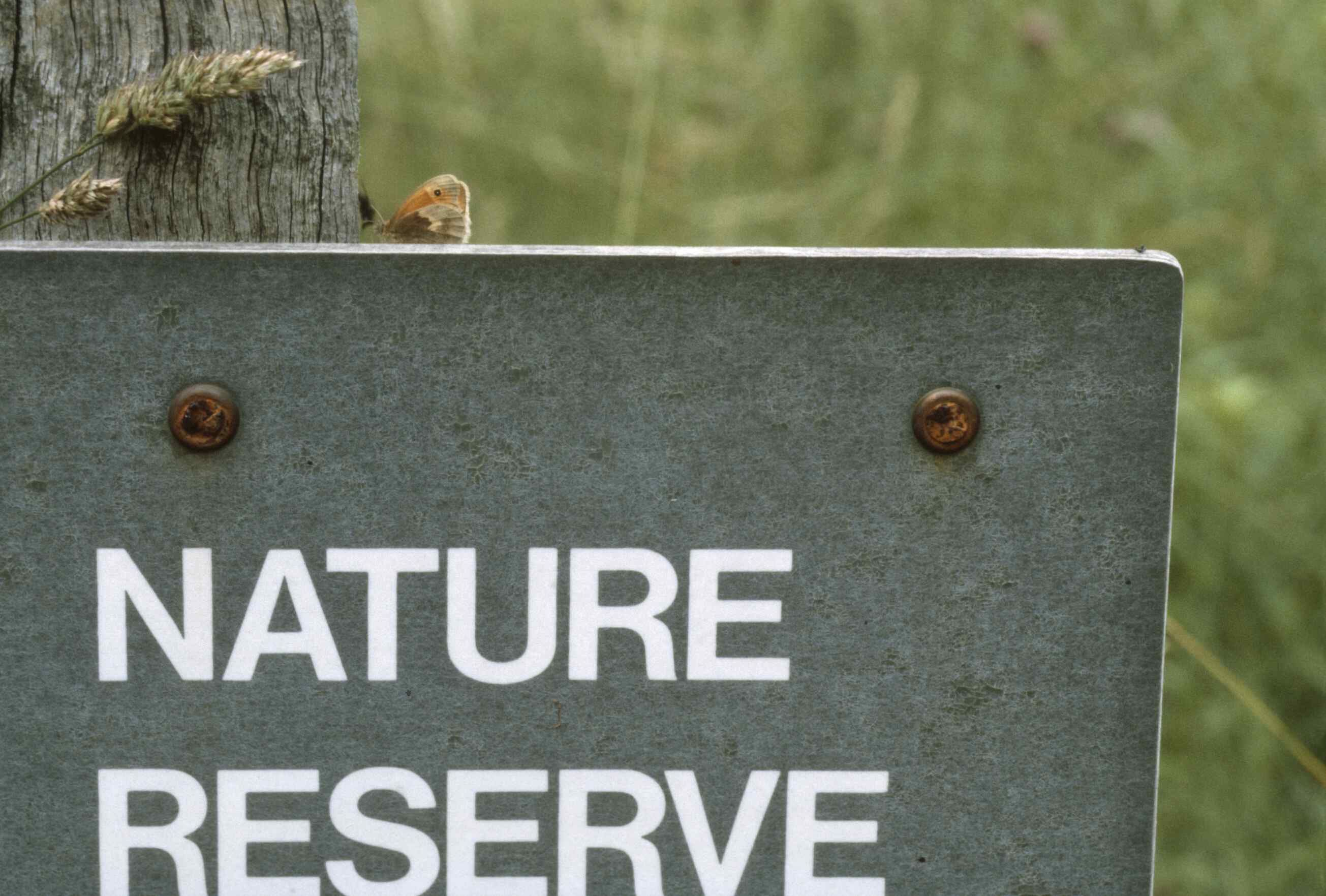 We like to consider it a garden nature reserve
We like to consider it a garden nature reserve
The project has been supported by Butterfly Conservation and the Lincolnshire Wildlife Trust. In addition, the Black Sluice Internal Drainage Board's conservation and environmental initiative is working closely with us to protect and encourage the butterflies. The garden is to be included in their Biodiversity Action Plan.
How it was achieved
Our garden is not just a place rich in nectar plants to entice passing butterflies, but a properly maintained and designed mini habitat for them to breed and thrive in. That was the main objective: to have them breeding here on site, as opposed to them merely visiting for nectar. In a nutshell, we needed to create an actual habitat for them - a piece of suitable countryside on our very own doorstep.
Out of the twenty-one species currently breeding on site, we were already up to eighteen of these as early as the year 2000. The current total of species seen to date in the garden is a staggering 28. A further six species of butterfly are found here less frequently, either due to their migratory status or the fact that they have yet to move in properly and make themselves at home. It doesn't happen over night. Special mention should be made here of three of these: the Green Hairstreak, White Admiral, and Silver-washed Fritillary.
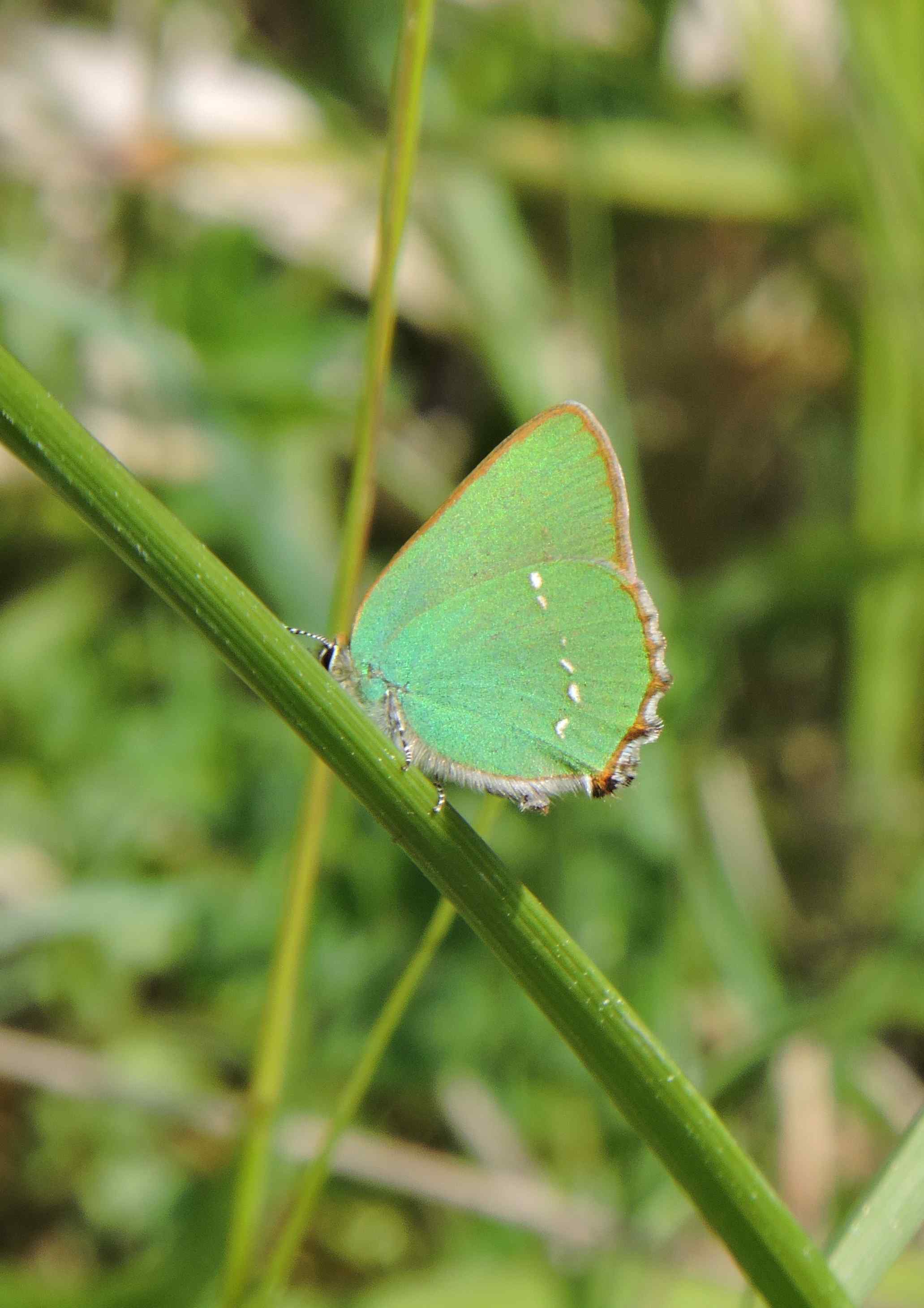 Green Hairstreak
Green Hairstreak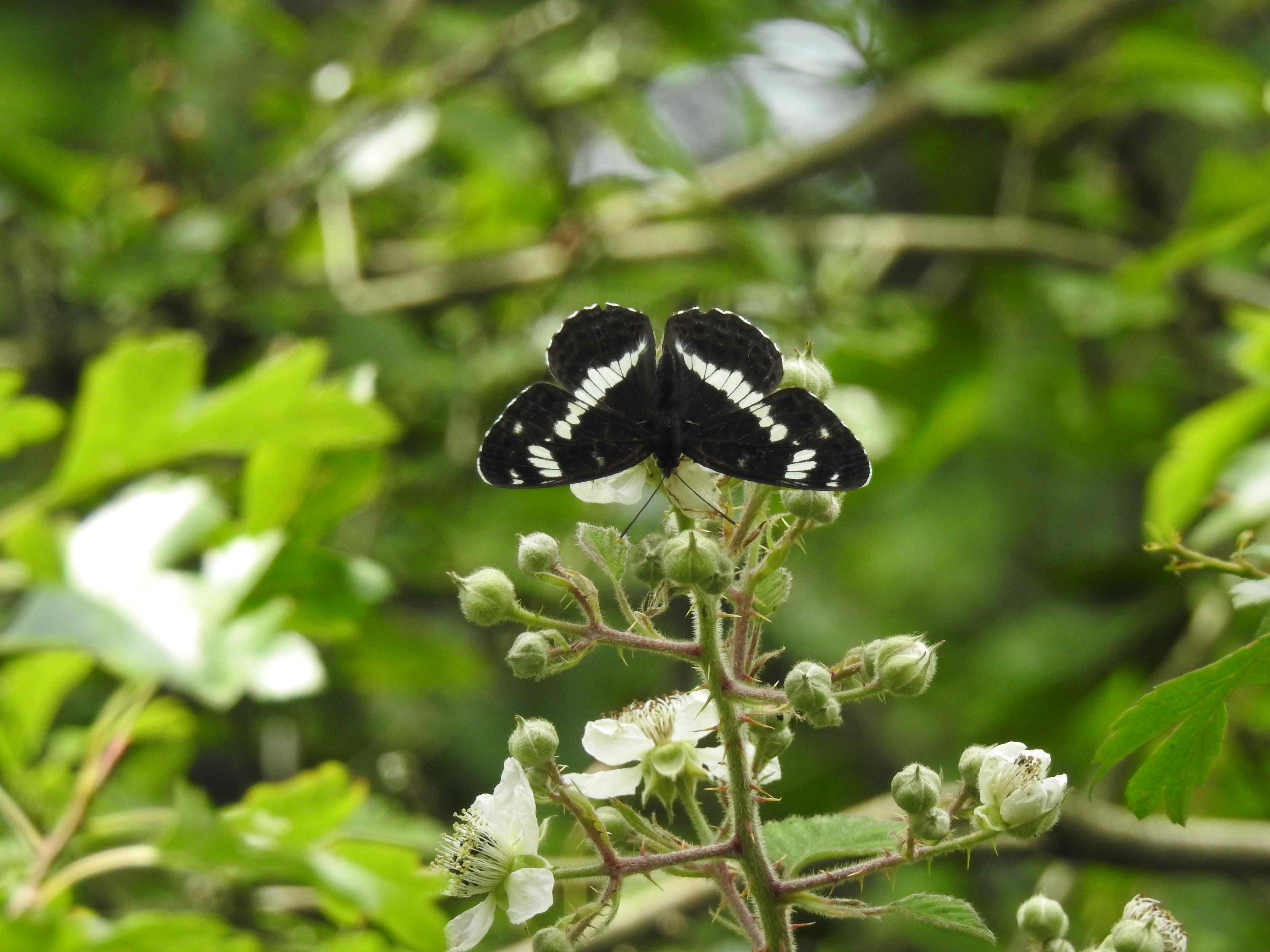 White Admiral
White Admiral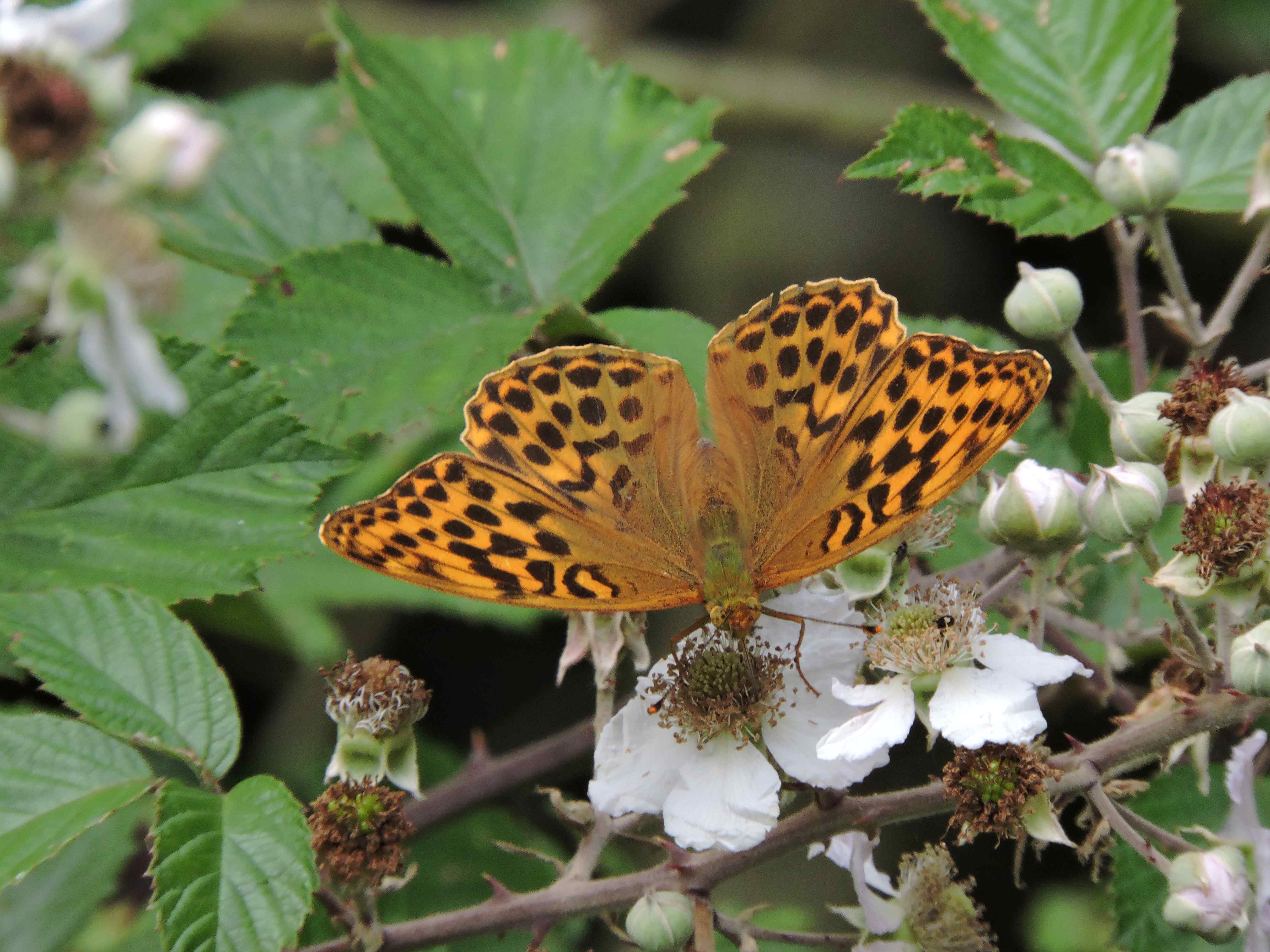 Silver-washed Fritillary
Silver-washed Fritillary
Butterfly mobility needs taking into account. The majority of butterfly species do not wander much at all of their own accord from their place of birth, which is partly why they are (generally) in so much need of conservation help. If their habitat is destroyed, they do NOT automatically move on.
The majority found locally are sedentary species, the least mobile. Others are more mobile but still limited within their range, being generally restricted to specific habitat types, and the exception to the rule are the few migratory species: butterflies that literally cross countries and do not generally survive the British winter so are not permanently established residents even though they may breed during their time here.
A normal garden rich in nectar attracts the more mobile butterflies because of their very mobility. By creating a butterfly friendly habitat we encourage them but we favour specialist treatment for the most threatened and sedentary ones.
You may ask where do these sedentary ones come from if they’re not mobile as such? Obviously they are in the near locality (in our case the dyke network) otherwise we could not attract them. Once with us, either by singletons being blown by the wind or females searching for egg-laying sites, the idea (and hope) is that they will stay with us, breed on site, thus setting up their own colony in time. There are a few mysteries in this context though: there are no no known local colonies of the Green Hairstreak or White Admiral close to us, yet they have been spotted in the garden! The Green Hairstreak in particular is very sedentary.
One thing over which we have no control is the weather, and to date we have suffered three summers officially classed as the worst butterfly years on record: 2007, 2012, and 2016. Yet after each year the butterflies (and Mother Nature) have fought back and in each case we've seen record breaking numbers for the rarer species. Very encouraging indeed.
 Flooding
Flooding
Over the years we have built up sufficient knowledge to understand the individual needs of the locally found species. The basic essentials in all cases are the two types of foodplants: nectar for the adult butterflies, but more importantly, the correct larval foodplants for the caterpillars. But even having a mass of these two types of plants throughout the acre site is not the whole story: larval foodplants in particular often need specific conditions. Without a wealth of correctly positioned larval foodplants on which the eggs can be laid, the butterflies will move on in search of them. The fact that larval foodplants are in the main viewed as troublesome weeds: nettles, grasses, sorrels, etc. is what puts many people off from even contemplating the idea further. But because the very design of this type of garden favours an informal, cottage garden/semi-wild approach, they nicely blend in with the rest.